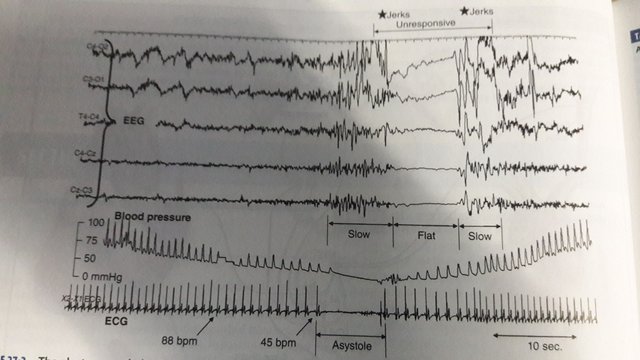#STEEMGIGS TIL(today i learned) -"SYNCOPE"- PART-1
Hello everyone,
Today i learned about syncope and I would like to tell about it. As syncope is a big topic i will split it into parts.we have to know about our health problems that is my goal.
Thanks to @surpassinggoogle and @steemgigs for supporting minnows.
It is a transient,self-limited loss of consciousness due to acute global impairment of cerebral blood flow
●The onset is rapid,duration brief, and recovery spontaneous and complete.
●A syncopal prodrome(presyncope) is common,although loss of consciousness may occur without any warning signals.
●Typical presyncopal symptoms include dizziness,lightheadedness or faintness,weakness,fatigue,and visual and auditory disturbances
PATHOPHYSIOLOGY
- The upright posture imposes a unique physiologic stress upon humans;most,although not all,syncopal episodes occur from a standing position.there is pooling of 500-1000ml of blood in the lower extremities and splanchnic circulation after standing.
- there is decrease in venous return to the heart and reduced ventricular filling that results in diminished cardiac output and blood pressure.
These hemodynamic changes provoke a compensatory reflex response,initiated by the baroreceptors in the carotid sinus and aortic arch,resulting in increased sympathetic outflow and decreased vagal nerve activity. - This reflex increases peripheral resistance,venous return to the heart,and cardiac output and thus limits the fall in blood pressure.
- If this response fails,as is the case chronically in orthostatic hypotension and transiently in neurally mediated syncope,cerebral hypoperfusion occurs.
- syncope is aconsequence of global cerebral hypoperfusion and thua represents a failure of cerebral blood flow autoregulatory mechanisms.
- The latency of autoregulatory response is 5-10s
- typically cerebral blood flow ranges from 50 to 60ml/min per 100g brain tissue and remains relatively constant over perfusion pressures ranging from 50 to 150 mm Hg.
- cessation of blood flow for 6-8s will result in loss of consciousness,while impairement of consciousness ensues when blood flow decreses to 25ml/min per 100g of brain tissue.
- from the clinical point of view, a fall in systemic systolic blood pressure to ~50 mm Hg or lower will result in syncope.a decrease in cardiac output and/or systemic vascular resistance -thus underlies the pathophysiology of syncope.
EEG Changes
Two patterns of electroencephalographic(EEG) changes occur
■1st pattern- "slow-flat-slow" pattern-
In this normal background activity is replaced with high-amplitude slow delta waves.this is followed by sudden flattening of the EEG-a cessation or attenuation of cortical activity- followed by the return of slow waves,and then normal activity.
■2nd pattern- slow pattern-
It is characterized by increasing and decresing slow wave activity only.the EEG flattening that occurs in the slow-flat-slow pattern is a marker of more severe cerebral hypoperfusion.
Here is the pic of EEG pattern -
"Slow-flat-slow" pattern

There is lot of information is ahead to learn. We will see in next part ..
My special thanks to my supporters @schamangerbert @pundito @novacadian @amreshchandra @angelinafx and my friends @sonuuday and @vinaykumarr who are supporting me.
Thanks for reading
Yours @summisimeon

You got a 0.84% upvote from @smartpost courtesy of @summisimeon!